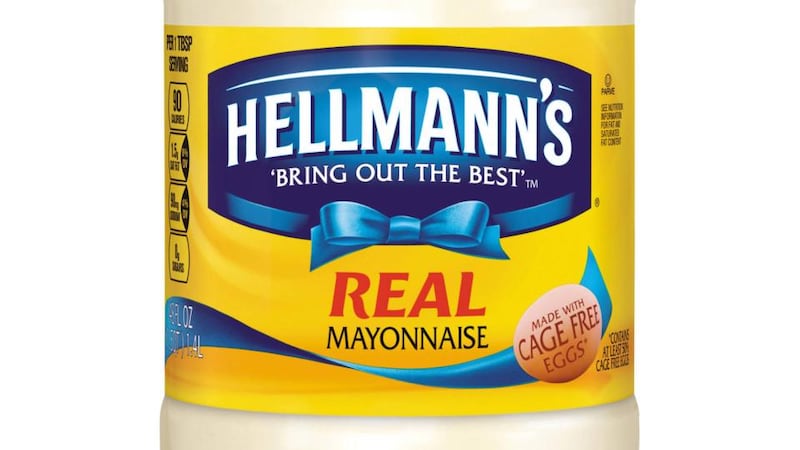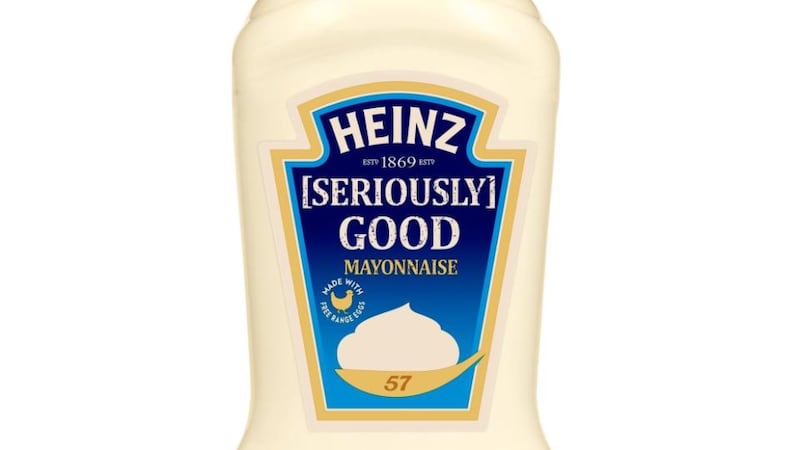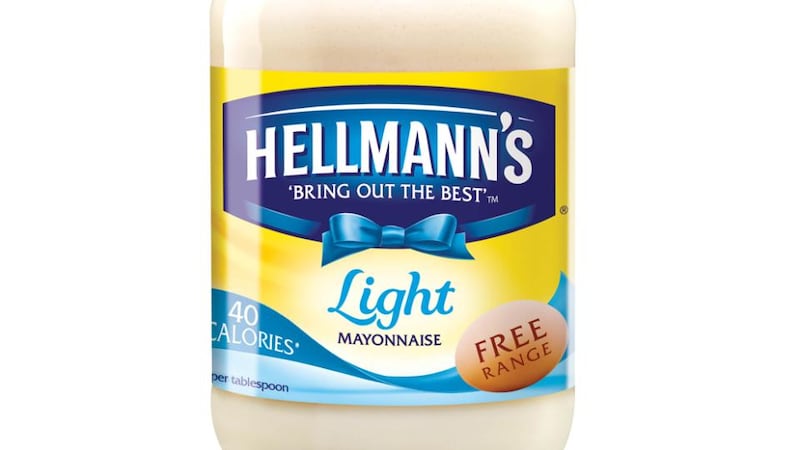If you thought that jars of Hellmann’s Real Mayonnaise were looking a tad peaky, top marks for observation. The strong yellow and blue of yesteryear has been replaced with paler tones, which are apparently intended to elicit the feeling that you are looking at a deli-inspired colour palette. It’s more contemporary, it seems, than the brash shades.

The label also has a note reading “est. 1913”, which reflects that Richard and Margaret Hellman began to sell mayonnaise made to their own recipe in jars from their delicatessen in New York that year. They are long gone, and these days the dressing is made by Unilever, which is one of the world’s biggest consumer products companies, with turnover last year of more than €50 billion.
The Hellmanns sold the business in 1927, but you will still see Richard’s photograph and story on the Hellmann’s website and his signature on the side of the jar. That’s all there because telling the story of how a brand started is popular in marketing these days. Marketers know that we warm to personal stories, so they try to highlight them. It’s just another sales push and it’s hardly surprising that Unilever should excel at marketing.
Sugar
That’s not to say that Hellmann’s Real Mayonnaise is not a decent product if you are looking at the simple, unflavoured mayonnaise in the jar, though it is disappointing to see sugar listed as an ingredient. The homemade version tends to have just oil, egg yolks, vinegar, mustard and salt. Some also add lemon. The raw ingredients are not cooked, simply whizzed up in about five minutes.
Mayonnaise manufacturers tend to use pre-processed pasteurised egg and egg yolk, as does the Hellmann’s version. Pasteurising turns the egg yolk brown, so that will have been treated with an enzyme to bring it back to yellow.
The extras you find in this jar are calcium disodium EDTA (E385), which is an antioxidant used to increase shelf life, and paprika extract as a colouring. There are also the mysterious “flavourings”.
A note in small capitals says it is "a good source of omega 3". The nutritional information notes that there is 7g of omega 3 in each 100g and it is from plant sources, in this instance from the rapeseed oil that makes up 78 per cent of the ingredients. Such health claims are regulated and the Food Safety Authority of Ireland notes that to make such a claim there must be a particular level of omega 3 in the product. (Check out the exact levels on the FSAI website.)

Heinz Seriously Good mayonnaise has an almost identical list of ingredients, but on the front it says there are no added colours, flavours or artificial ingredients.
Lighter versions
The Hellmann’s pot of plain has 2,965 kilojoules or 721 kilocalories in 100g, which is pretty hefty, with Heinz coming in at 2,650kj/644kcal. That’s why many people choose lighter versions. Hellmann’s Light Mayonnaise in the jar, for example, says it has 60 per cent fewer calories than its Real Mayonnaise. Compare the two lists of ingredients and you will see that is because it has a lot less rapeseed oil at 25 per cent, down from 78 per cent – and therefore less omega 3 too.

The oil has to be replaced by something, however, and in this case it is largely water, which now makes up more than 25 per cent of the product.
Since that makes it very watery, you will find that Hellmann’s Light Mayonnaise has added modified cornstarch, cream powder, citrus fibre, guar gum, xanthan gum and mustard flour. The percentage of egg is reduced from almost 8 per cent in the full-fat product to 1.5 per cent too. So the main ingredients have been replaced because we ask for low-calorie products.
On other brands, the list of ingredients is even longer and includes such lovelies as microcrystalline cellulose (E460i) and carboxymethylcellulose (E466), which can be made from wood pulp or other plant fibres. They provide dietary fibre that helps to bulk up the product and pass through the body undigested. These “healthy” versions should be a lot cheaper given the ingredients, but cost the same.
My preference is to have the real thing, but have a little less of it.
FOOD LABELS SERIES
1) Being a successful shopper
2) Bread
3) Milk
4) Cereal
5) Rashers
6) Yoghurt
7) Soup
8) Hummus
9) Pasta sauce
10) Chinese ready meals
11) Frozen chips
12) Chilled fish
13) Egg
14) Chicken Kiev
15) Crisps
16) Mayonnaise
17) Baked beans
18) Tomato ketchup
19) Chocolate digestive biscuits













